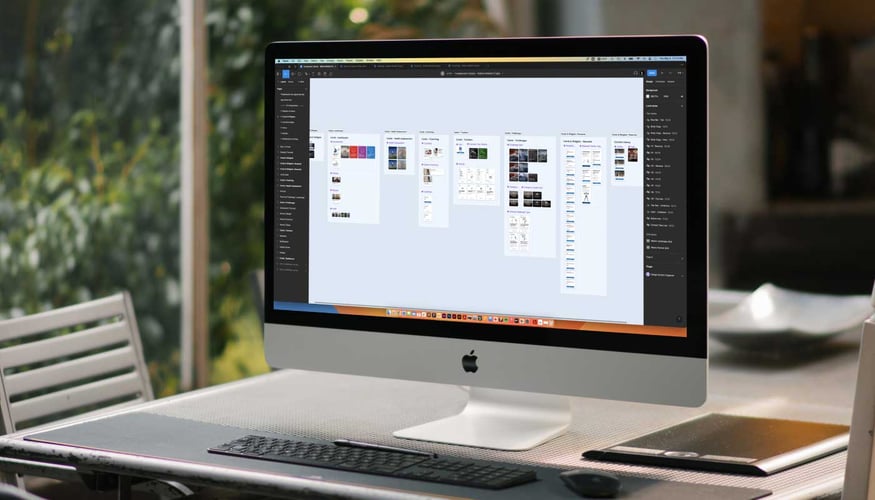Overview
- UX design deliverables are tangible artifacts created during the design process, including user research, information architecture, and interaction design items.
- Common deliverables include Competitive Analysis, User Personas, User Journey Maps, and Usability Testing to understand and improve user experience.
- They also comprise deliverables for structuring content and detailing process. Site Maps and User Flow Diagrams structure content, while Wireframes, Interactive Prototypes, and Design Specifications detail the design process.
Time to read: 10 min
Exploring UX Deliverables and Their Importance
In the ever-evolving landscape of digital design, user experience (UX) has emerged as a crucial factor in determining the success of digital products and services. One key aspect of UX design is the development and implementation of a range of deliverables, which serve as artifacts to communicate design ideas, facilitate collaboration among team members, and guide the product development process. An understanding of these deliverables is essential for professionals in the field who wish to stay at the forefront of innovation, as well as for organizations seeking to enhance or refine their digital offerings.
This article delves into some of the most common UX deliverables utilized by UX professionals in various stages of product development. From wireframes to prototypes to usability test reports, these tangible outputs play an indispensable role in shaping high-quality user experiences while simultaneously fostering a culture of innovation within teams.
By examining the unique purpose, function, and impact on the overall design process of each UX deliverable, readers will gain valuable insights into how they can be effectively leveraged to optimize project outcomes and push the boundaries of what digital products can achieve.
UX Basics: What is UX?
User Experience, or UX, refers to the practice of designing a product or service with the goal of enhancing and optimizing the interactions between users and the product. The outcomes of effective UX can manifest as heightened customer satisfaction, boosted conversion rates, and an overall enhancement in the user's experience. For more on foundational information about UX, see our deep dive into "What is UX Design and Its Benefits?".
UX Basics: UX DESIGN Process Overview
Grasping the influence and contribution of each UX deliverable to innovation requires a solid understanding of the user experience process. This process is a structured approach that includes multiple stages, from the commencement of research and brainstorming ideas to the execution and assessment of the product. This all-encompassing approach guarantees the alignment of the final product or service with the user's requirements, preferences, and anticipations.
Phases of UX Design Process
UX research deliverables allow organizations to collect vital data about user behaviors, incentives, and challenges. This information forms the basis for enlightened design choices. The UX methodology is divided into distinct, critical stages: exploration, strategizing, design creation, product development, and evaluation. For more information about UX design process, see our UX Design Process Deep Dive.
UX Basics: Qualitative and Quantitative Research
Professionals in the field of UX utilize various user research methodologies to delve deeper into understanding users and their requirements. These methodologies are primarily categorized as Qualitative and Quantitative research.
-
Qualitative research is a type of user research deliverable which involves the analysis of data from a range of sources such as interviews, surveys, observations, and reviews.
-
Quantitative research is another type of user research deliverable which focuses on the collection of numerical data and statistical analysis.
Each, Qualitative and Quantitative UX Research, has its unique strengths and weaknesses, and they can be employed effectively to guide decisions concerning user experience design.
UX Deliverables for Effective Design
Explore the essential UX deliverables crucial for effective design, fostering collaboration, and driving innovation in digital product development.
User Research Deliverables
User Research Deliverables are tangible artifacts produced during the user research process, which help UX designers gather insights, identify user needs and pain points, and make informed design decisions. These deliverables serve as valuable tools for communicating findings to stakeholders, facilitating collaboration among team members, and guiding the product development process.
-
Competitive Analysis involves evaluating the products or services of rival companies to identify their strengths and weaknesses. It help a UX designer gain insights into market trends, recognize opportunities for improvement, and differentiate their offerings from competitors.
-
User Personas are fictional representations of a product or service's target users, reflecting their behaviors, goals, and motivations. They help UX designers empathize with users, make informed design decisions, and tailor products to specific audience segments.
-
User Journey Maps are visual representations of a user's interactions with a product or service over time. They help UX designers understand user needs, identify pain points, and optimize the user experience across various touchpoints.
-
Usability Testing is a process used to ensure that a product, such as software or hardware, is effective and efficient for its intended purpose. Testing audits the ease of use, user experience, and effectiveness of a product.
Competitive Analysis
A competitive analysis is a systematic evaluation of rival companies' products or services, which helps UX designers identify their strengths and weaknesses while gaining insights into market trends. By understanding the competition, designers can pinpoint opportunities for improvement and differentiate their offerings, ultimately enhancing the user experience.

The purpose of conducting a competitive analysis is to gather valuable information about the current market landscape and understand how competitors are addressing user needs. This analysis typically involves assessing various aspects of competitors' products or services, such as their features, usability, visual design, and overall user experience.
Through this research, designers can identify patterns and trends, discover best practices, and uncover potential gaps in the market. By incorporating these findings into their design process, they can develop innovative solutions that cater to users' preferences and stand out from the competition.
In addition to informing design decisions, competitive analysis also serves as a powerful communication tool, allowing UX designers to present their findings to stakeholders and justify their design choices. This collaborative approach helps foster a shared understanding of the market and user needs, ultimately leading to better-informed product development strategies.
By integrating competitive analysis into their UX deliverables, designers can create a strong foundation for developing user-centered products and services that not only cater to diverse needs but also drive innovation in an increasingly competitive digital landscape.
User Personas
User personas are fictional representations of a product or service's target users, capturing their behaviors, goals, motivations, and other relevant characteristics. These personas help a UX designer empathize with users, make informed design decisions, and tailor products to specific audience segments, ultimately leading to more engaging and effective user experiences.
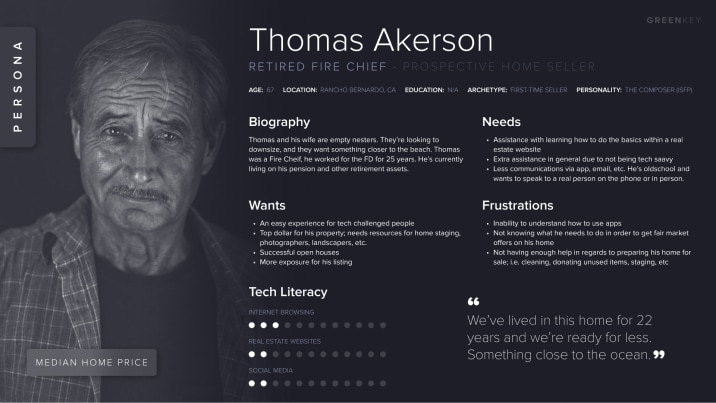 User Persona created for Seamgen client GreenKey, a startup in the Real Estate sector.
User Persona created for Seamgen client GreenKey, a startup in the Real Estate sector.
The purpose of creating user personas is to establish a deep understanding of the target audience and their needs, enabling designers to make more informed design choices that resonate with users. By personifying different user types, personas help designers and stakeholders alike to visualize and relate to users' experiences, fostering a more user-centric design approach.
Incorporating user personas into UX deliverables allows designers to tailor their design choices to cater to the specific needs and preferences of their audience. By focusing on the users represented by these personas, designers can develop innovative solutions that address real-world challenges and contribute to more engaging, user-friendly products and services.
Best Practices for Creating User Personas
To create accurate user personas, gather data through user interviews, surveys, and analytics. Identify patterns in user behavior, group similar characteristics, and develop detailed persona profiles that include demographics, goals, and pain points.
User Journey Maps
User journey maps, also known as a customer journey map, are visual representations of a user's interactions with a product or service over time, illustrating the steps they take while engaging with a product, their emotional states, and the overall user experience. These maps help UX professionals understand user needs, identify pain points, and optimize the user experience across various touchpoints, ensuring a seamless and enjoyable user journey.
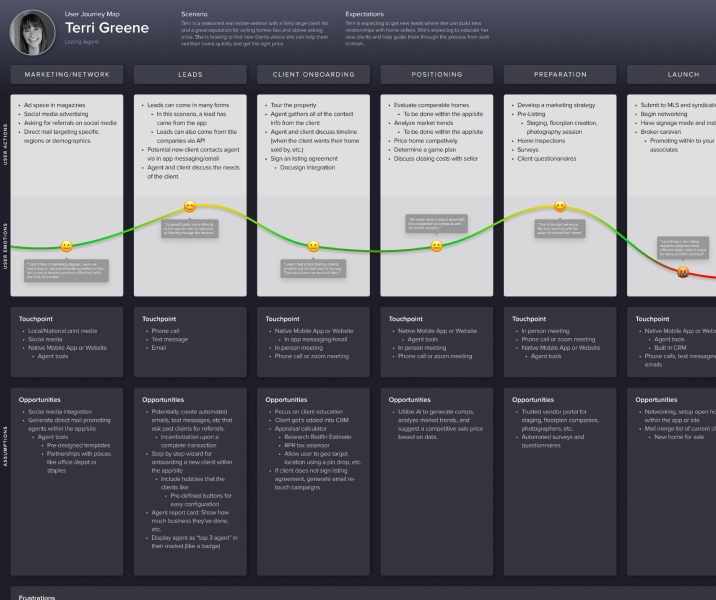 User Journey Map created for Seamgen client GreenKey, a startup in the Real Estate sector.
User Journey Map created for Seamgen client GreenKey, a startup in the Real Estate sector.
The purpose of user journey maps is to provide a holistic view of the user experience, enabling designers to identify areas of friction and opportunities for improvement. By mapping out the user's journey, designers gain valuable insights into the context of use, the challenges users face, and their expectations at each stage of the interaction.
Incorporating a customer journey map into UX deliverables helps designers and stakeholders visualize the user experience and identify areas where improvements can be made. By analyzing these maps, teams can prioritize design changes and implement solutions that enhance the user experience across multiple touchpoints.
How to Create Effective User Journey Maps
Start by defining the user personas and their goals. Outline the steps users take to achieve these goals, and identify the touchpoints where they interact with the product. Then, map out the user's emotions, pain points, and opportunities for improvement at each stage of the journey.
Usability Testing
Usability testing, a critical component of accessibility and usability deliverables, makes it possible to create products and services designed with user experience at their core, tailored to meet the unique needs of their audience. This approach identifies potential challenges and areas for improvement while ensuring seamless user interactions with products and services. It provides valuable insights into how real users interact with a product, highlighting any issues they may encounter.

Usability testing reports document the findings from usability tests, which assess a product's effectiveness, efficiency, and user satisfaction. These reports help UX designers identify areas for improvement, inform design decisions, and track progress over time.
Usability tests bridge the gap between design intention and user reality, making it a vital tool in creating accessible and enjoyable user experiences. Incorporating feedback from real users during development drives meaningful innovation that resonates with target audiences while reducing costs associated with redesigns or amendments.
Key Components of a Usability Testing Report
A comprehensive usability test report should include an overview of the test objectives, methodology, and participants, a summary of key findings, detailed descriptions of usability issues and recommendations for improvement, and metrics to measure the product's performance.
Information Architecture Deliverables
-
Site maps are a common deliverable of an information architecture project, used to visualize the structure, hierarchy, and relationship of pages and content on a website. A site map is used to identify navigation paths and to determine how to best organize content.
-
User Flow Diagrams help to understand how a user will move between pages, and how those page interactions affect the desired outcome. A user flow diagram enables the designer to evaluate how a user's interactions with a website will enable them to achieve their desired outcomes.
Site Maps
A site map serves as an essential component of the information architecture deliverables in the realm of user experience (UX) and user interface (UI) design. They provide a visual representation of the hierarchical structure of a website or application, enabling designers and stakeholders to comprehend the organization and navigation of UX content more effectively.
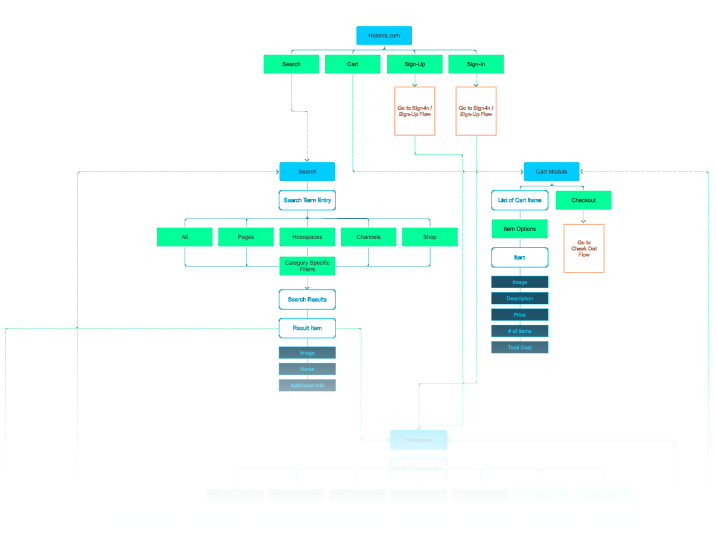
By creating sitemaps UX, teams can foster innovation by streamlining website design deliverables and enhancing communication among team members, resulting in more seamless user experiences.
Incorporating a site map into UI/UX deliverables allows teams to identify potential gaps or redundancies in their designs, ensuring a comprehensive approach to delivering high-quality user experiences. When utilized efficiently, a site map can facilitate improved navigation flows and stimulate creative solutions to common UX challenges that arise during the design process.
As such, a site map is invaluable for fostering a collaborative environment where innovative ideas can flourish.
Moreover, a site map offers tangible UX deliverables that empower project stakeholders to visualize and understand the proposed information architecture clearly. This visualization is critical for maintaining alignment across various departments involved in the project – from developers to marketing teams – helping them work towards shared goals while maintaining focus on users' needs.
Best Practices for Creating Sitemaps
-
Define your website's goals and target audiences: Before starting the sitemap creation process, clearly outline your website's objectives and target user groups to ensure that the structure is designed to meet their needs.
-
Start with a content inventory: Conduct a comprehensive review of all the content on your website or planned for the site. This will help you understand what needs to be included in the sitemap and how it should be organized.
-
Use a hierarchical structure: Organize your content into main categories and subcategories, reflecting the hierarchy of information on your site. This will make it easier for users to navigate and understand the site's structure.
-
Keep it simple and intuitive: Aim for a clean, easy-to-understand structure that enables users to quickly find the information they're looking for. Avoid overly complex navigation systems or an excessive number of categories.
-
Be consistent with labeling: Use clear, descriptive labels for each category and subcategory, ensuring that they accurately represent the content within. Consistency in labeling will help users build a mental model of the site's structure.
-
Include all necessary pages: Ensure that all key pages, including contact information, privacy policy, terms of service, and any other important content, are included in the sitemap.
-
Test and refine: Validate your sitemap with real users, gathering feedback on its effectiveness and ease of use. Iterate and refine the structure based on their input, ensuring that it remains user-friendly and meets your website's goals.
-
Keep it up-to-date: Regularly review and update your sitemap to ensure that it reflects any changes to your site's content or structure. This will help maintain a seamless user experience and ensure that users can always find the information they need.
User Flow Diagrams
Enhancing UX design documentation through foundational tools like wireframes and user flow diagrams, teams can effectively address complex challenges in information architecture deliverables. User flows, a critical aspect of UX methodologies, visually represent users' paths while engaging with digital products or services, shedding light on their interactions and decision-making processes.
By mapping out user journeys, this interaction design document helps a UX designer identify pain points and opportunities for improvement, refining user experiences across multiple touchpoints. Incorporating a user flow diagram in information architecture deliverables fosters a comprehensive understanding of user behaviors and preferences, enabling teams to develop innovative solutions catering to diverse needs.

User flow diagram created for a team challenge product for Seamgen client ActiveHealth Management, a subsidiary of CVS Health.
These graphical representations not only support intuitive navigation systems development but also promote collaboration among stakeholders by offering a common reference point for discussions on usability and functionality. Consequently, UX deliverables become more robust and dynamic, reflecting a commitment to user-centered designs that resonate with audiences.
Adopting a holistic perspective, integrating both wireframes and user flow diagrams into information architecture deliverables ensures UI/UX design aspects align with overarching business objectives. This approach encourages innovation through collaborative problem-solving efforts and helps maintain focus on delivering exceptional user experiences.
Techniques for Mapping User Flow Diagrams
-
Define user goals and scenarios: Start by identifying the primary goals and scenarios for each user persona. This will provide the foundation for mapping user flow diagrams, as it highlights the key tasks users aim to accomplish on your platform.
-
Break down tasks into steps: Break each user goal into a series of steps or actions users must take to complete the task. This helps you understand the sequence of interactions and enables you to design an efficient and intuitive user flow.
-
Identify entry and exit points: Determine where users will enter the flow and where they will exit once they have completed their task. This will help you visualize the beginning and end of each user journey.
-
Use flowchart symbols: Utilize standard flowchart symbols to represent different elements in the user flow, such as rectangles for steps or actions, diamonds for decision points, and arrows for directional flow. This will make your user flow diagrams easier to understand and communicate to your team.
-
Highlight decision points: Identify and clearly mark any points in the flow where users need to make a decision or choose between multiple options. This will help you optimize the flow by minimizing user confusion or frustration at these critical junctures.
-
Show error states and alternative paths: Include possible error states and alternative paths users may take when they encounter issues or make incorrect choices. This will help you design a more comprehensive and resilient user flow.
-
Annotate with context: Add annotations to your user flow diagrams to provide context, such as explaining user motivations, technical constraints, or other relevant information that may impact the flow.
-
Validate with user testing: Test your user flows with real users to ensure they are accurate, efficient, and align with user expectations. Gather feedback and refine your user flow diagrams based on the insights gained from testing.
-
Collaborate and iterate: Share your user flow diagrams with stakeholders, designers, and developers to facilitate collaboration and discussion. Iterate on your user flow diagrams as needed, based on feedback and project requirements, to create an optimal user experience.
Interaction Design Deliverables
-
Wireframes are a visual representation of a website's structure, with the purpose of outlining its functionality and elements, while considering user experience. Wireframes display the aesthetic and functional elements of each page, allowing designers to iterate and improve the user experience.
-
Interactive Prototypes are used to simulate the user experience, often providing a more realistic feel for the product or service.
-
Design Specifications are documents that detail the design and user experience of a product, including technical and functional requirements. Design Specifications ensure a product design meets user needs and expectations, as well as any regulatory or legal requirements.
Wireframes
Transitioning to another essential aspect of information architecture deliverables, wireframes serve as a critical component in the realm of UX design documentation. As part of UI/UX deliverables, wireframes provide a skeletal representation of a website or application layout, depicting the arrangement of various elements and their interactions within the UI.
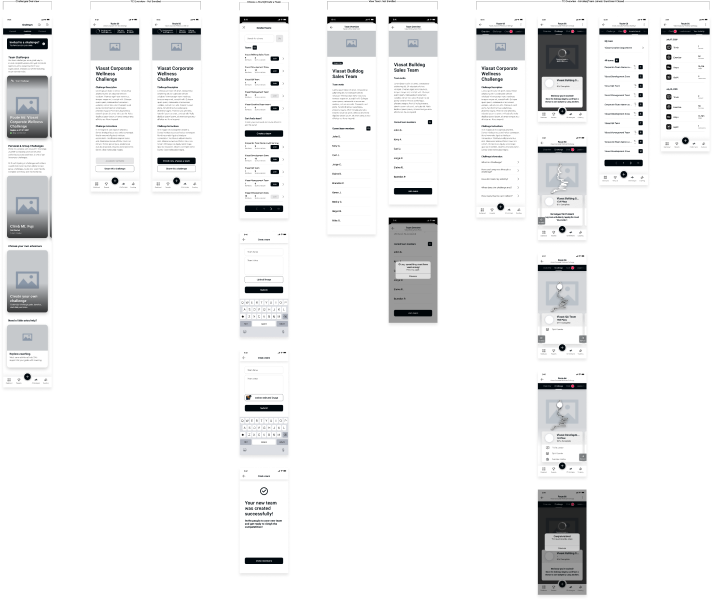 Team Challenge wireframes created for ActiveHealth Management, a subsidiary of CVS Health.
Team Challenge wireframes created for ActiveHealth Management, a subsidiary of CVS Health.
This fundamental tool not only enhances communication among team members but also fosters an innovative approach to problem-solving in UX designer deliverables. The use of wireframes in crafting example UX deliverables allows for a more effective exploration of potential solutions, ensuring that all team members share a common understanding of the project's goals and constraints.
By visually representing the structure and hierarchy of content, these low-fidelity prototypes facilitate iterative design processes that encourage collaboration and experimentation. Through this approach, teams can identify potential issues early on, enabling them to address challenges proactively while fostering creativity in developing user-centered solutions.
In summary, incorporating wireframes into information architecture deliverables empowers designers and stakeholders alike to envision the user experience from a holistic perspective. This visualization method enables teams to maintain focus on users' needs while encouraging innovation through collaborative problem-solving efforts.
 Popular tools for creating wireframes and high-fidelity mockups: Figma, Sketch, and Axure.
Popular tools for creating wireframes and high-fidelity mockups: Figma, Sketch, and Axure.
Tools and Methods for Creating Wireframes
-
Pen and Paper: The simplest method for creating wireframes is using pen and paper. This approach allows for quick and easy sketching of ideas, making it ideal for brainstorming and initial concept development.
-
Digital Drawing Tools: Apps like Adobe Illustrator, Sketch, or Figma offer vector-based drawing tools that allow for more precise and detailed wireframe creation. These tools also provide features such as layers, grids, and templates to streamline the wireframing process.
-
Dedicated Wireframing Software: Applications like Balsamiq Mockups, Axure RP, and UXPin are specifically designed for creating wireframes and offer a range of pre-built UI components, drag-and-drop functionality, and interactive elements to help designers create more sophisticated wireframes.
-
Design Collaboration Platforms: Tools such as InVision, Figma, and Miro facilitate collaboration among team members during the wireframing process. These platforms enable real-time editing, version control, and feedback sharing, making it easier for teams to work together on wireframe creation.
-
Use UI Components and Libraries: Many design tools offer libraries of pre-built UI components that can be easily incorporated into wireframes. Utilizing these elements can save time and ensure consistency across designs.
-
Create a Grid System: Using a grid system helps maintain alignment, hierarchy, and balance in your wireframes. Grids can be established within your design tool or drawn manually on paper.
-
Low-Fidelity vs. High-Fidelity Wireframes: Depending on the project's requirements and stage, you may choose to create low-fidelity (rough sketches) or high-fidelity (detailed, polished) wireframes. Low-fidelity wireframes are faster to create and allow for more flexibility, while high-fidelity wireframes provide a more accurate representation of the final design.
-
Wireframe Annotations: Including annotations within your wireframes can help provide context and explain specific design decisions or functionality to team members and stakeholders.
-
User Flow Integration: Consider incorporating user flows into your wireframes to demonstrate how users will navigate and interact with the interface. This can help ensure that the wireframes support a seamless and intuitive user experience.
-
Iteration and Testing: Wireframes should be continuously refined based on feedback from team members, stakeholders, and user testing. This iterative process will help you create a more effective and user-centric design.
Interactive Prototypes
An interactive prototype is an integral component of interaction design deliverables, bridging the gap between static wireframes and fully functional products. As UX artifacts, they allow for immersive exploration of proposed solutions and simulate the functionality and interactivity of a website or application.
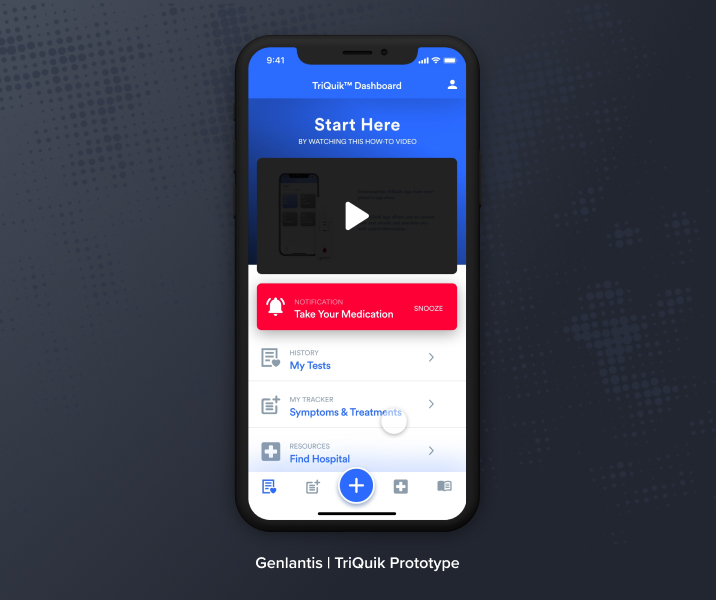 Interactive prototype created for Seamgen client Genlantis, a health sciences company.
Interactive prototype created for Seamgen client Genlantis, a health sciences company.
Incorporating prototypes into the UX method enables designers to test aspects such as usability, user flow diagrams, and overall user experience before committing to a final design. This approach allows for accurate validation of design concepts and assumptions while fostering iterative improvements based on user feedback.
By addressing potential issues in a timely manner, costly revisions during later development stages can be reduced. Moreover, involving stakeholders in prototype testing encourages collaboration and open dialogue—essential ingredients for creating innovative solutions catering to end-users' needs.
The combination of wireframes and prototypes within design deliverables strengthens the foundation for exemplary user experiences. These indispensable UX artifacts facilitate clear communication among team members, streamline development processes, and ultimately contribute to crafting solutions that resonate with users in an ever-changing digital landscape.
Popular Tools for Creating Interactive Prototypes
-
Sketch: A widely-used vector-based design tool, Sketch allows designers to create high-fidelity prototypes using its extensive library of UI components, powerful plugins, and integration with other design tools like InVision and Zeplin.
-
Figma: Figma is a browser-based design and prototyping tool that supports real-time collaboration, making it an ideal choice for teams. It offers powerful design capabilities, built-in prototyping features, and integration with third-party tools for seamless workflow.
-
InVision: InVision is a popular design collaboration platform that enables designers to create an interactive prototype from static designs. With features like transitions, animations, and gestures, InVision helps designers bring their ideas to life and gather feedback from team members and stakeholders.
-
Adobe XD: Part of the Adobe Creative Cloud suite, Adobe XD is a comprehensive design and prototyping tool that provides a wide range of features for creating interactive prototypes, including auto-animate, responsive resizing, and voice prototyping.
-
Axure RP: Axure RP is a robust tool for creating wireframes, flowcharts, and interactive prototypes. It offers advanced features such as conditional logic, dynamic content, and adaptive views, making it suitable for designing complex and data-driven interfaces.
-
UXPin: UXPin is a design and prototyping tool that supports both low-fidelity and high-fidelity prototyping. Its features include built-in UI libraries, responsive breakpoints, and the ability to incorporate real data into prototypes for a more realistic experience.
-
Proto.io: Proto.io is a web-based prototyping tool that enables designers to create fully interactive and animated prototypes without writing any code. It supports a wide range of gestures, transitions, and animations, allowing designers to create high-quality prototypes that closely resemble the final product.
-
Framer: Framer is a design and prototyping tool that combines the power of code with a visual interface. It allows designers to create prototypes with custom animations and advanced interactions, making it suitable for more complex projects.
-
Principle: Principle is a Mac-based prototyping tool that focuses on creating animated and interactive UI designs. It offers a simple interface with powerful features such as timeline-based animations, component states, and device-specific previews.
-
Marvel: Marvel is an easy-to-use design and prototyping platform that supports creating an interactive prototype from wireframes or high-fidelity designs. It provides a range of features, including animations, transitions, and user testing capabilities, to help designers create and validate their ideas.
Design Specifications
Design specifications are crucial UX deliverables that outline functional requirements, visual elements, and user interactions to ensure seamless usability and adherence to accessibility compliance. These documents serve as a roadmap for designers, developers, and stakeholders, streamlining communication and collaboration.
Incorporating accessibility guidelines and usability best practices in design specifications helps organizations create products that cater to diverse needs. This approach not only addresses UX deliverables but also fosters an understanding of innovation in a broader context.
Establishing clear expectations and objectives early on promotes a culture of inclusivity that resonates with users from all walks of life. Design specifications hold a unique position among common UX deliverables due to their direct influence on every phase of product development.
When executed thoughtfully, these documents lead to improved usability, enhanced accessibility compliance, and ultimately more innovative products that stand out in today's competitive market landscape.
Best Practices for Creating Design Specifications
-
Establish clear objectives: Begin by outlining the primary goals and objectives of the product or service. Clearly defining what the project aims to achieve helps maintain focus and ensure that all design decisions align with the overarching vision.
-
Gather and analyze user requirements: Conduct thorough user research to identify user needs, preferences, and pain points. Analyzing user requirements helps create design specifications that cater to the target audience and deliver an exceptional user experience.
-
Develop a consistent structure: Organize the design specifications document in a consistent and logical manner, making it easy for stakeholders to navigate and understand. This includes using headings, subheadings, and bullet points to present information clearly.
-
Include visual elements: Incorporate visual aids such as wireframes, mockups, and flowcharts to provide context and clarity. Visual elements help communicate complex ideas more effectively and ensure that all stakeholders share a common understanding of the design.
-
Prioritize accessibility and usability: Make sure to incorporate accessibility and usability guidelines throughout the design specifications. This helps create products that are not only functional and user-friendly but also adhere to established standards and best practices.
-
Provide clear and concise explanations: Write clear, concise, and jargon-free descriptions of each design element, ensuring that stakeholders from various backgrounds can easily understand the specifications. Avoid overly technical language and use plain, straightforward terms whenever possible.
-
Address multiple platforms and devices: If the product or service will be available on multiple platforms or devices, include design specifications that address each platform's unique requirements and constraints. This ensures a seamless user experience across all touchpoints.
-
Collaborate and gather feedback: Engage stakeholders throughout the design specification process and gather their feedback to ensure that the final document addresses all concerns and requirements. Collaboration leads to a more well-rounded and comprehensive design specification.
-
Update and revise regularly: As the project evolves, be prepared to update and revise the design specifications to reflect new insights or changes in project requirements. Keeping the document up-to-date ensures that it remains a valuable resource for the entire team.
-
Establish version control: Implement a version control system to track changes and updates to the design specifications document. This helps maintain a clear record of the document's evolution, allowing team members to easily reference previous versions and understand the rationale behind design decisions.
Visual Design Deliverables
-
Design systems are comprehensive guidelines that govern the visual language and user experience of a product or service, ensuring consistency and promoting collaboration among team members.
-
UI design mockups are high-fidelity representations of a product's user interface, showcasing the visual layout, interactions, and aesthetics to guide the development process.
-
Component Libraries are collections of reusable UI elements that form the building blocks of a product's user interface, ensuring design consistency and speeding up the development process.
Design Systems
By implementing design systems, UX teams can streamline their processes and create consistent, user-centered products. Design systems, a fundamental aspect of modern UX methodologies, encompass a comprehensive set of visual language, UI components, and UX guidelines that govern the aesthetics and user experience of a product or service. This cohesive framework ensures consistency across all touchpoints, promoting collaboration among team members and maintaining brand identity.
Through the use of design systems, UX designers can efficiently address various design challenges and ensure that their digital products or services provide a consistent and engaging experience. These systems serve as a single source of truth for all design-related decisions, making it easier for designers, developers, and stakeholders to communicate and collaborate effectively.
Design systems enable teams to create reusable UI components and maintain a shared visual language, fostering a more efficient design process and reducing the risk of design inconsistencies. Consequently, the adoption of design systems enhances the overall quality of UX deliverables, reflecting a commitment to user-centered design that resonates with audiences.
Key Elements of a Successful Design System
-
Unified visual language that includes typography, color schemes, iconography, and imagery.
-
Component library containing reusable UI elements, ensuring consistent design across all touchpoints.
-
UX guidelines and best practices to inform design decisions and create intuitive user experiences.
-
Clear documentation for designers, developers, and stakeholders to understand and use the design system effectively.
-
Regular updates and maintenance to ensure the design system stays up-to-date with evolving brand requirements and industry trends.
UI Design Mockups
Incorporating UI design mockups into the UX design process enables teams to effectively communicate their design vision and ensure a seamless transition from concept to implementation. UI design mockups, an essential aspect of UX methodologies, are high-fidelity visual representations of a product's user interface that include layout, color schemes, typography, and interactive elements. These mockups serve to provide a clear and accurate depiction of the final product, enabling designers, developers, and stakeholders to visualize and evaluate the design before implementation.
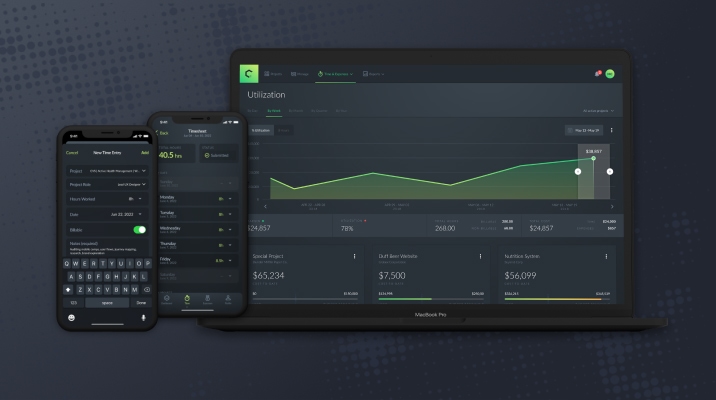 High fidelity comps designed for tech startup Crumboard, an all-in-one project management tool.
High fidelity comps designed for tech startup Crumboard, an all-in-one project management tool.
The use of UI design mockups allows UX designers to identify potential usability issues, refine the design based on feedback, and ensure that their digital products or services align with user needs and expectations. By offering a detailed view of the UI, mockups facilitate collaboration among team members and provide a common reference point for discussions on design decisions and functionality.
UI design mockups not only contribute to a more efficient design process but also help in reducing the risk of costly redesigns or amendments during development. By addressing potential challenges early in the design process, teams can optimize the user experience across various touchpoints and deliver a polished final product that resonates with audiences.
Tools and Techniques for Creating UI Design Mockups
-
Digital design tools, such as Sketch, Adobe XD, or Figma, for creating detailed and interactive mockups.
-
Wireframing tools like Balsamiq, Axure, or InVision to create low-fidelity mockups for rapid ideation and iteration.
-
Design collaboration and feedback platforms, such as Zeplin or Abstract, to streamline communication and design handoffs among team members.
Component Libraries
In the realm of UX design, component libraries play a crucial role in streamlining the design and development process while maintaining brand consistency across different products or services. Component libraries, a key aspect of UX methodologies, are curated collections of reusable UI elements, such as buttons, input fields, and navigation bars, that designers and developers can utilize to create consistent user interfaces. The purpose of component libraries is to improve collaboration among team members by providing a shared set of UI components and ultimately save time and effort during the design and development stages.
By leveraging component libraries, UX designers can ensure a consistent look and feel across multiple touchpoints, adhering to established design guidelines and reinforcing brand identity. These libraries also enable designers to address potential usability issues more effectively and refine the user experience by iterating on individual components rather than redesigning entire interfaces.
In addition to fostering consistency, component libraries promote a more efficient design process by enabling designers and developers to quickly assemble user interfaces from a set of pre-built, reusable elements. This approach reduces redundancy in design efforts and ensures that teams can focus on addressing user needs and improving the overall experience.
Key Elements of a Good Component Library
-
Comprehensive set of UI components that cater to various design needs and scenarios.
-
Clear and concise documentation, including usage guidelines and code snippets, for designers and developers to understand and use the components effectively.
-
Consistent visual language that aligns with the overall design system or brand guidelines.
-
Easy integration with development tools and frameworks for seamless implementation.
-
Regular updates and maintenance to ensure the component library stays up-to-date with evolving design requirements and industry trends.
Creating and Maintaining a Design System with Component Libraries
-
Begin by defining the visual language and design principles that align with your brand identity and user experience goals.
-
Identify the UI components needed for your product or service and create a comprehensive library that caters to various design scenarios.
-
Document each component, including its usage guidelines, code snippets, and any variations, to ensure clarity and consistency in implementation.
-
Integrate the component library with your development tools and frameworks for seamless collaboration between designers and developers.
-
Regularly review and update your design system and component library to accommodate evolving design requirements, industry trends, and user feedback.
Accessibility and Usability Deliverables
Accessibility Compliance is a process of making sure a product is accessible to people with disabilities and ensures a product is compliant with standards, such as the Web Content Accessibility Guidelines (WCAG).
Heuristic Evaluations are expert-led inspections of user interfaces to identify potential usability issues, using established usability principles or heuristics as a guiding framework.
Accessibility Compliance
Accessibility compliance is a vital aspect of UX deliverables, ensuring products and services cater to diverse needs while adhering to established standards and guidelines. By integrating accessibility compliance into content strategy, UX competitive analysis, and other UX tasks, organizations can foster an inclusive approach to innovation.

Prioritizing accessibility compliance throughout the development process is crucial for organizations striving for excellence. Incorporating this aspect into various stages, such as wireframes, prototypes, and user testing, ensures businesses meet all users' needs while adhering to legal requirements and best practices.
This focus on inclusivity leads to improved usability and drives innovation within the industry. Embracing accessibility compliance as an integral part of UX deliverables helps create products and services that will work well regardless of disabilities users might have.
How to Conduct an Accessibility Audit
-
Familiarize yourself with accessibility guidelines: Before starting the audit, gain a comprehensive understanding of the Web Content Accessibility Guidelines (WCAG) or other relevant accessibility standards. These guidelines provide a framework for evaluating and improving the accessibility of digital products.
-
Define the scope of the audit: Determine the specific sections or features of the product to be audited. This may include key user flows, high-traffic pages, or critical functionality. Establishing a clear scope helps ensure that the audit is focused and efficient.
-
Assemble an audit team: Gather a team of individuals with diverse skill sets, including UX designers, developers, and accessibility experts. Including individuals with disabilities or those who use assistive technologies can provide valuable insights during the audit process.
-
Develop an audit plan: Create a detailed plan outlining the audit process, including the scope, timeline, roles and responsibilities, and evaluation criteria. Share this plan with stakeholders to ensure a shared understanding of the project goals and expectations.
-
Conduct manual testing: Manually test the product's UI and functionality to identify potential accessibility issues. This may involve using a keyboard to navigate the site, testing with screen readers, or adjusting color contrast settings.
-
Utilize automated testing tools: Complement manual testing with automated accessibility testing tools, such as Lighthouse or axe, to identify additional issues. Keep in mind that automated tools can't catch all accessibility problems, so a combination of manual and automated testing is crucial.
-
Document findings and prioritize issues: Record all identified accessibility issues, along with their severity and potential impact on users. Prioritize the issues based on their significance, making sure to address high-impact problems first.
-
Develop a remediation plan: Create a plan outlining the steps needed to address each identified accessibility issue. This may involve making design changes, updating code, or modifying content. Ensure that the remediation plan includes timelines and assigned responsibilities for each task.
-
Implement and verify fixes: Address the accessibility issues according to the remediation plan and retest the product to ensure that the fixes have been successful. Continue to iterate and refine the product until all identified issues have been resolved.
-
Maintain accessibility: Once the audit is complete, establish ongoing processes to maintain accessibility. This may involve incorporating accessibility checks into the development process, providing accessibility training for team members, or conducting regular accessibility audits to ensure continued compliance.
Heuristic Evaluations
Heuristic evaluations, an essential aspect of UX methodologies, are expert-led inspections of user interfaces aimed at identifying potential usability issues. The purpose of heuristic evaluations is to assess the design of a product or service against established usability principles or heuristics, providing valuable insights into areas for improvement and ensuring a seamless user experience.
By systematically reviewing the interface and assessing it against a set of heuristics, a UX designer can identify potential pain points and optimize the user experience before investing time and resources in testing with real users. This method helps prioritize design revisions, minimize the risk of major usability issues going undetected, and ultimately contribute to the creation of user-centered products and services.
Incorporating heuristic evaluations into the UX design process fosters a proactive approach to usability, enabling teams to identify and address potential issues early in the development cycle. This approach ensures that the final product is user-friendly and aligns with both user needs and business objectives, promoting innovation and delivering exceptional user experiences.
Best Practices for Conducting Heuristic Evaluations
-
Define a clear set of heuristics: Start with a well-established set of usability principles, such as Nielsen's 10 heuristics, and adapt them to suit your specific product or industry.
-
Assemble a diverse team of evaluators: Include UX experts with varying backgrounds and perspectives to identify a wider range of potential issues.
-
Conduct evaluations individually: Encourage evaluators to work independently to avoid groupthink and ensure unbiased assessments.
-
Provide clear guidelines: Ensure that evaluators understand the heuristics, their application, and the scope of the evaluation.
-
Aggregate and prioritize findings: Compile the results from all evaluators, identify recurring issues, and prioritize them based on their impact on user experience.
-
Iterate and re-evaluate: Address the identified issues, revise the design, and conduct additional heuristic evaluations to ensure continuous improvement.
UX DESIGN FAQs
Ever-evolving User Experience
In conclusion, the field of User Experience design is ever-evolving, with new trends and best practices emerging frequently. As a result, it is imperative for UX designers to stay current in their knowledge and skills to effectively create and present deliverables that cater to various industries and platforms.
By overcoming common challenges such as tight deadlines, limited resources, and communication barriers with clients or stakeholders, UX designers can ensure their deliverables provide exceptional user experiences.
Moreover, continuous professional development through attending conferences, participating in workshops, and engaging in online forums can assist UX designers in honing their craft.
By mastering effective methods of presenting and communicating UX deliverables to clients and stakeholders alike, designers can successfully navigate the complex landscape of user experience design - ultimately contributing to better products that resonate deeply with users' emotions and needs.







